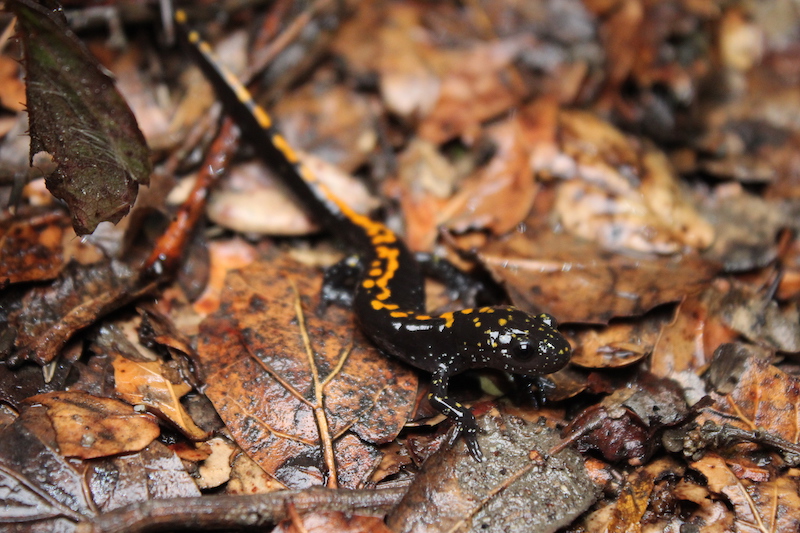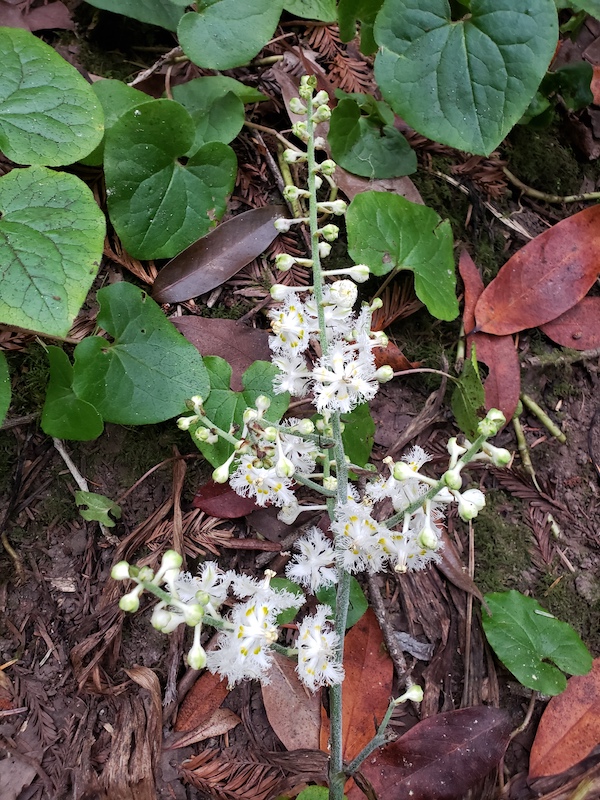
Ambystoma macrodactylum croceum – Santa Cruz long-toed salamander
Submitted by Noah Morales
Noah spotted this juvenile Santa Cruz long-toed salamander crossing a road and some train tracks northwest of Watsonville in Santa Cruz county. This salamander sub-species is endemic to California and can be found under rocks, logs, or wood around the Monterey Bay coast in Monterey and Santa Cruz counties. It is listed as endangered under both the federal Endangered Species Act and California Endangered Species Act, due to loss of habitat to land development. Adults spend most of their lives underground, using tunnels created by burrowing mammals to get around, only coming out during breeding season. These creatures may be tiny, but they are completely carnivorous! Their diet consists of small crustaceans, worms, spiders, and other invertebrates. Larger Santa Cruz long-toed salamander larvae have also been known to cannibalize smaller larvae. Currently, CNDDB has 26 occurrences across their native range. Many thanks to Noah for snapping a picture of such a rare and incredible species!

Veratrum fimbriatum – fringed false-hellebore
Submitted by Ayla Mills
This month’s amazing find was discovered by Ayla Mills in Mendocino County. Ayla is an ecologist working for Prunuske Chatham, Inc. on natural resource assessment, vegetation monitoring, and reporting for parks and preserves throughout the North Bay. She shows her passion for California’s native plants through her experience in invasive plant research, native plant propagation, and her participation in California Native Plant Society conferences as well as Jepson Herbarium workshops.
Veratrum fimbriatum was first listed in the CNPS Inventory of Rare and Endangered Plants in 1974 and is currently considered a California Rare Plant Rank 4.3 species (plants of limited distribution; not very threatened in California). It is found growing in mesic bogs and fens, coastal scrub, meadows and seeps, as well as North Coast coniferous forests. The flowering structure is known as a panicle, meaning it has several branching points with flowers off each branching point. In V. fimbriatum the flowers are deeply fringed which is one of the defining characters for this species. These fringed blooms can be found in late summer from July through September. Thank you, Ayla, for sharing your amazing photo and the passion and experience you contribute to rare plant conservation!